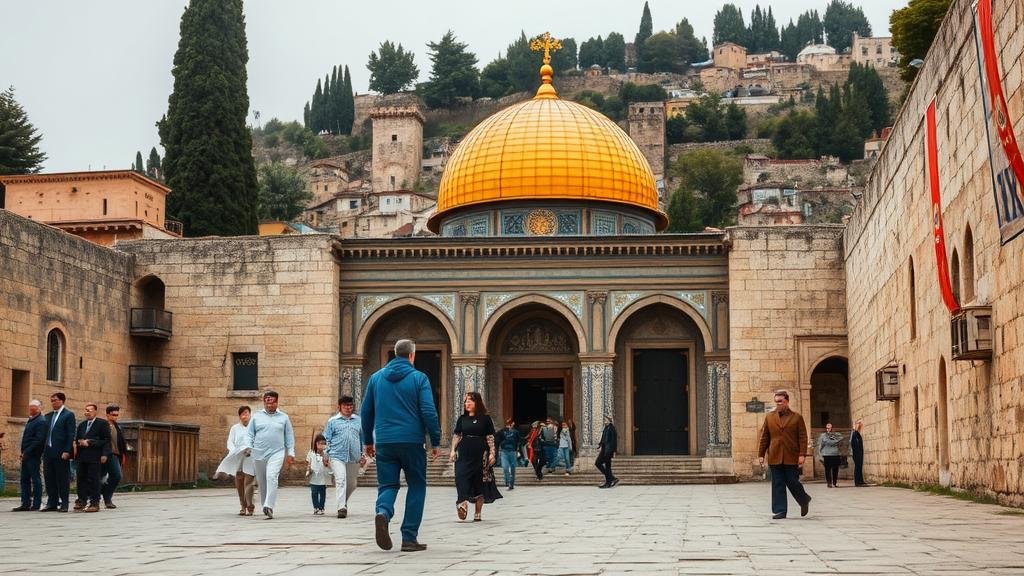Prompting AI to Extract Hidden Clues from Early Religious Pilgrimage Records
Abstract
This research article explores the utilization of artificial intelligence (AI) in parsing historical records of religious pilgrimages to uncover hidden clues and insights into early spiritual practices. Through examining various datasets, including the Canterbury Tales and records from Islamic pilgrimages to Mecca, this study aims to demonstrate how AI-driven analysis can reveal patterns previously obscured in traditional scholarly approaches. This study will also quantitatively assess the potential of AI applications within this field.
Introduction
Religious pilgrimage, a significant aspect of many faiths, has been a means for individuals to engage in spiritual journeys. Early pilgrimage records are often fragmented and difficult to interpret, making them ripe for analysis through AI technologies. This article investigates how AI can extract information from these textual records, offering new insights into social, cultural, and spiritual dynamics of past societies.
Understanding Religious Pilgrimages
Religious pilgrimages have been documented in various cultures and religions, including:
- The Hajj to Mecca in Islam
- The Camino de Santiago in Christianity
- Hindu pilgrimages to Varanasi
Each pilgrimage holds deep spiritual significance and has a rich history of interpretation. The difficulty lies in the fact that many records detailing these journeys are often unstructured and scattered across different manuscripts.
The Role of AI in Historical Analysis
Natural Language Processing (NLP)
Natural Language Processing allows AI to interpret and analyze human language, making it an essential tool in historical textual analysis. For example, using NLP, researchers can identify linguistic patterns, thematic structures, and recurrent motifs within pilgrimage narratives. Recent breakthroughs in NLP, such as the transformer networks exemplified by models like GPT-3, have shown substantial promise in extracting data from historical texts.
Pattern Recognition
AI can identify patterns across various pilgrimage records, allowing scholars to draw connections between seemingly disparate events. For example, data from the Medieval era reveal trends, such as the influx of Christian pilgrims to Jerusalem during the Crusades, which can illuminate socio-political contexts affecting pilgrimage behavior.
Case Studies
The Canterbury Tales
The Canterbury Tales, written in the late 14th century by Geoffrey Chaucer, contains references to pilgrimage as a central theme. Researchers applying AI to this text have utilized sentiment analysis to quantify the emotions conveyed in pilgrimage narratives, illuminating pilgrims motivations and experiences.
The Hajj
Similarly, records pertaining to the Islamic Hajj have been analyzed using AI tools to extract data on demographics, routes taken, and the evolution of pilgrimage practices over centuries. Historical reports indicate that in 2021, about 1.5 million Muslims participated in Hajj, but the underlying data show shifts across time, such as the growth in international pilgrims post-World War II (Pew Research Center, 2020).
Challenges and Methodological Considerations
While the prospects of AI in analyzing pilgrimage records are promising, several challenges exist:
- Data Quality: Many early records may be incomplete or inaccurately transcribed.
- Cultural Nuances: Understanding the cultural context behind pilgrimages requires careful interpretation that may be overlooked by AI.
- Ethical Considerations: The use of AI in historical analysis raises questions about ownership and representation of cultural narratives.
Conclusion
The intersection of AI and historical research presents an innovative frontier in understanding early religious pilgrimages. Through techniques like NLP and pattern recognition, researchers can unearth hidden insights and broaden their comprehension of historical social dynamics. While challenges remain, the potential for AI to enhance our understanding of religious practices is immense. Future research should focus on refining AI methodologies and addressing ethical considerations, ensuring that the insights gleaned honor the complexities of human spirituality.
Actionable Takeaways
- Researchers are encouraged to integrate AI tools in their studies to uncover new insights from traditional texts.
- Collaboration between historians and data scientists can enhance interdisciplinary research in this field.
- Ethical frameworks must be established to guide the use of AI in cultural heritage studies, ensuring respectful engagement with historical texts.



